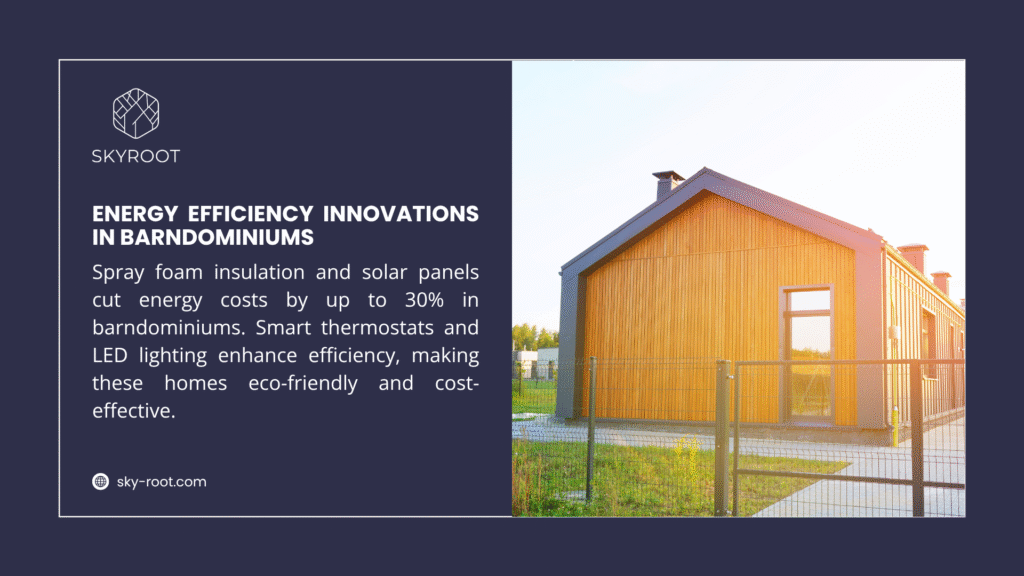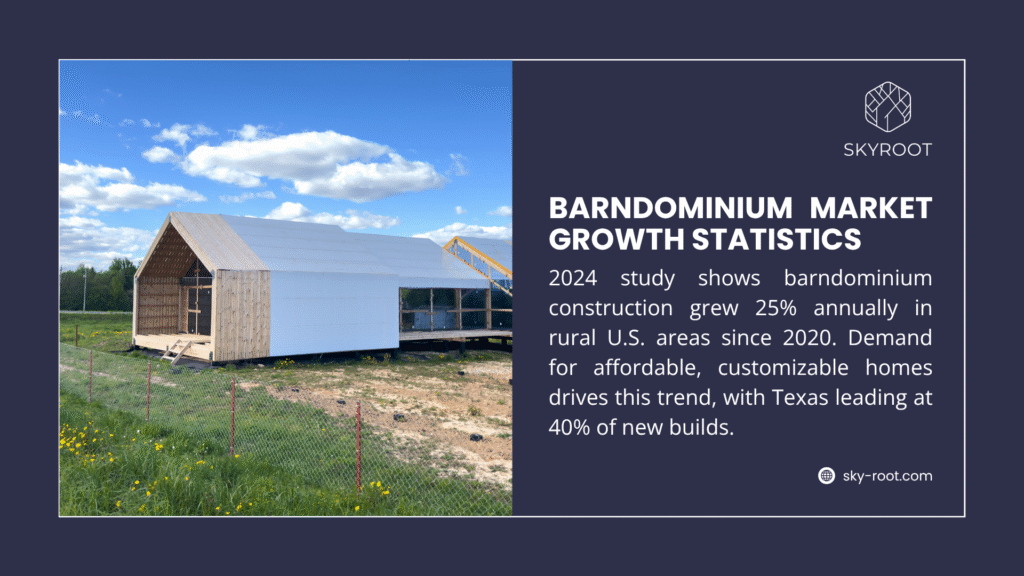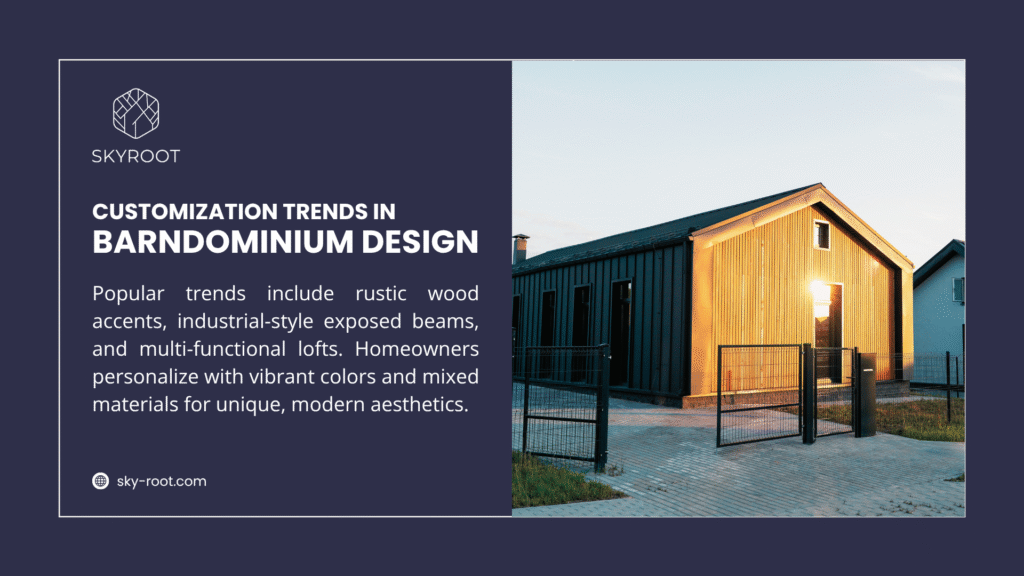Barndominiums started showing up everywhere about ten years ago. Nobody really knew what to call them at first – some folks said “barn house,” others went with “shop house.” The name that stuck combines barn and condominium, which sounds weird but makes sense when you see one.
These buildings look like barns from the outside but feel like regular homes inside. The whole thing began when farmers realized they could live in their barn buildings instead of building separate houses. Smart idea, really. Now people build brand new barndominium homes from scratch, keeping that barn look but making everything inside comfortable for families.
What makes them different? Space. Lots of it. Most regular houses chop everything up with walls everywhere. Barndominiums keep things open. High ceilings, big rooms, and you can see from one end to the other. Some people love it, others think it feels too much like living in a warehouse. Depends on what you’re looking for.
Why People Choose Barndominium Homes
Building a barndominium house costs way less than a regular house in most places. The construction goes faster too. Instead of spending months on framing, roofing, and siding separately, much of that work happens at the same time.
The maintenance thing is huge. Metal siding doesn’t rot, warp, or need painting every few years like wood does. Metal roofs last for decades without problems. Some homeowners spend their weekends fixing stuff around the house – barndominium owners spend theirs doing other things.
Barndominium style homes also give you flexibility that regular houses don’t. Want to knock out a wall? Easy, since most interior walls don’t hold up the roof. Need a workshop space? Got it. Want to park your RV inside during winter? Plenty of room. Try doing that with a traditional house.
The downsides exist too. Some neighborhoods won’t allow them. Insurance companies sometimes get confused about what they’re insuring. Reselling might take longer since fewer people understand what they’re buying. Bank financing can get tricky if the lender hasn’t dealt with barndominiums before.
Building Materials Matter
Construction methods vary quite a bit depending on who’s doing the building. The steel frame vs wood frame house decision affects everything else down the line.
Steel framing costs more upfront but allows for those massive open spaces without posts everywhere. Steel doesn’t shrink, warp, or attract termites. On the flip side, steel conducts heat and cold, so insulation becomes more important. Welding takes special skills that not every contractor has.
Wood framing feels more familiar to most builders. It costs less, insulates better naturally, and modifications are easier later. But wood has limits on how far it can span without support. Those big open rooms might need posts or beams interrupting the space.
The best material to build a house depends on local conditions. Areas with high humidity might favor steel to avoid rot issues. Places with extreme temperature swings might prefer wood for its insulation properties.
Foundation choices matter more than people realize. The types of foundations for homes include concrete slabs, crawl spaces, and full basements. Barndominiums work with all of them, though slabs are most common since they’re cheaper, and many barndominiums don’t need basement storage.

Material Costs and Properties
| Material | Cost Level | Lifespan | Maintenance | Weather Resistance |
| Steel Frame | High | 50+ years | Very Low | Excellent |
| Wood Frame | Medium | 30-50 years | Medium | Good |
| Metal Siding | Medium | 40+ years | Very Low | Excellent |
| Wood Siding | Low-Medium | 15-30 years | High | Fair |
Real Numbers on Costs
How much does it cost to build a barndominium? That question gets asked a lot, and the answer depends on about fifty different things. Location matters most. Building in rural Texas costs way less than building in suburban California.
A basic shell – just the frame, roof, and siding – might run $15-25 per square foot. That gets you a weatherproof building with no interior finishes. Adding electrical, plumbing, insulation, flooring, and everything else brings the total to $50-90 per square foot for basic finishes, or $90-150 for higher-end stuff.
A 2000 square foot barndominium might cost $100,000-300,000, depending on finishes and location. That same-sized traditional house could easily cost $300,000-500,000 in many markets. The savings add up fast.
Labor costs vary dramatically by region. Rural areas often have lower labor rates but might have fewer contractors experienced with barndominium construction. Urban areas have more contractors but higher rates and stricter building codes.
Financing gets tricky sometimes. Traditional mortgages work fine for completed barndominiums, but construction financing during building might require special lenders.
Size Options and Layouts
Small barndominium homes under 1500 square feet work great for couples or small families. Even at that size, the open layout makes the space feel bigger than a traditional house with the same square footage. These smaller versions cost less to build and maintain while still providing that distinctive barndominium feel.
Medium sizes between 1500-2500 square feet handle most family situations comfortably. This size allows for separate bedrooms while maintaining open common areas. Many people add a workshop or office space that takes advantage of the flexible layout.
Larger barndominiums over 2500 square feet can rival luxury homes for space and amenities. These might include separate living areas, guest quarters, home theaters, or extensive workshop spaces. The construction costs per square foot often drop as size increases since many fixed costs get spread over more space.
The 1 story vs 2 story house choice affects both cost and functionality. Single-story barndominiums cost less to build and maintain easier accessibility as people age. Two-story versions maximize space on smaller lots and create interesting loft areas that work well for bedrooms or offices.
Some people put living spaces upstairs and workshops downstairs. Others reverse it, putting bedrooms on the ground floor and entertainment areas in the loft. The flexibility lets families design around their specific needs instead of adapting to a predetermined layout.
Prefab and Modular Advantages
Prefab barndominium homes have changed the game for people wanting faster construction. These buildings arrive partially assembled, cutting months off construction timelines. Weather delays that plague traditional construction become much less of an issue.
Barndominium modular homes typically cost 10-20% less than site-built equivalents. The factory construction environment allows for better quality control and more consistent results. Workers aren’t dealing with weather, and materials stay dry during construction.
Quality control in factory settings often exceeds what’s possible on construction sites. Materials don’t get rained on, workers have proper lighting and climate control, and assembly happens on level surfaces with precision equipment.

Barndominiums vs Regular Houses
The barndominium vs house comparison shows some clear differences that affect both immediate satisfaction and long-term value.
Barndominiums win on construction costs in most markets. Building permits often cost less since many areas classify them as agricultural buildings rather than residential. Construction timelines run shorter, getting families into homes faster. The open floor plans appeal to modern lifestyles where families spend more time together in common areas.
Maintenance costs favor barndominiums significantly. Metal siding and roofing last decades without attention. No exterior painting, minimal roof repairs, and fewer problems with rot, insects, or weather damage. Energy efficiency can be excellent with proper insulation, though the high ceilings and open spaces require careful HVAC planning.
Traditional houses have advantages in financing, resale, and acceptance. Banks understand them better, insurance companies have standard policies, and buyers know what they’re getting. Neighborhoods designed for traditional houses might not allow barndominiums, limiting location choices.
Resale markets for barndominiums are growing but still smaller than traditional houses. This means potentially longer selling times but also less competition when buying. Some areas show strong appreciation for unique properties, while others remain skeptical of non-traditional housing.
You can also read: 1 Story vs 2 Story House: Making the Smart Choice for Your Family
Utilities and Modern Conveniences
Electrical systems in barndominiums require different planning than traditional houses. Those big open spaces need adequate lighting without creating dark corners. Running wiring through metal buildings takes special techniques and materials. Many builders install electrical in conduit rather than running it through wall cavities.
Plumbing layouts often end up simpler due to fewer interior walls. This can reduce costs but might limit bathroom and kitchen locations. Water pressure and flow depend on proper fixture selection, including quality globe valve components in supply systems.
HVAC systems face unique challenges with high ceilings and open layouts. Hot air rises, so heating systems work harder to keep floor areas comfortable. Cooling systems need adequate return air flow across large spaces. Zone systems work well for controlling temperature in different areas.
Internet and cable wiring requires advance planning since adding it later in metal buildings can be difficult. Many owners install extra conduit during construction for future technology needs.
Regional Differences and Acceptance
Barndominiums gained popularity first in rural areas where zoning regulations are more relaxed. Texas, Oklahoma, Arkansas, and other southern states lead in construction numbers due to favorable building codes and cultural acceptance of agricultural-style buildings.
Urban and suburban areas show more resistance due to architectural control requirements and neighborhood covenants. Some municipalities have specific restrictions against residential buildings that look like agricultural structures. Others have embraced them as innovative housing solutions.
Regional material availability significantly influences costs. Areas near steel production facilities see lower material costs for metal framing and siding. Regions with abundant timber might favor wood construction due to lower transportation costs.
Local contractor availability affects both cost and quality. Areas with more barndominium construction have contractors experienced with the unique requirements. Other regions might require bringing in specialized contractors or training local ones.

Build Your Barndominium Home with SkyRoot
Building a barndominium requires expertise in construction methods, local codes, and design principles. SkyRoot understands the challenges these projects present and can navigate potential problems before they become expensive mistakes.
Experienced builders know which materials work best in different climates and can recommend cost-effective solutions that meet local building requirements. They understand the permitting process and can help avoid delays that plague many owner-built projects. Sky Root offers custom-built homes for homeowners ready to build their ideal barndominium. Let’s start building your dream home today!
